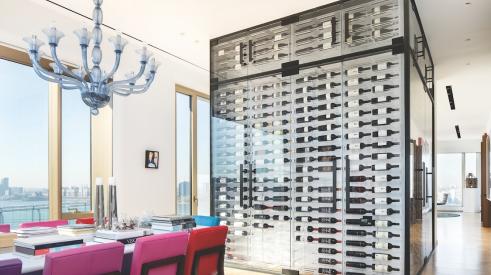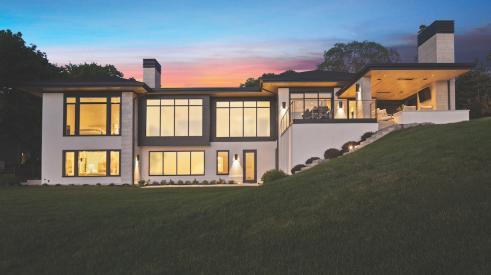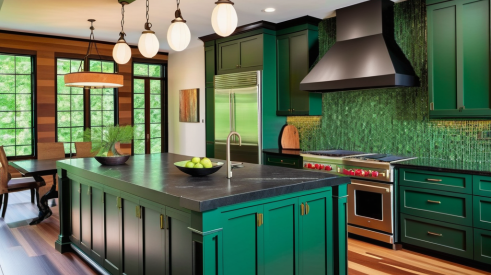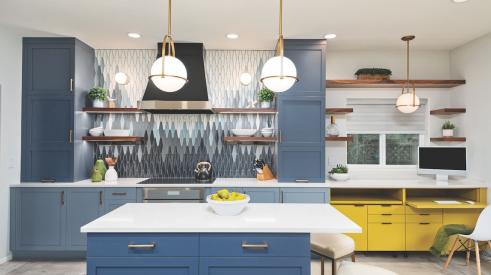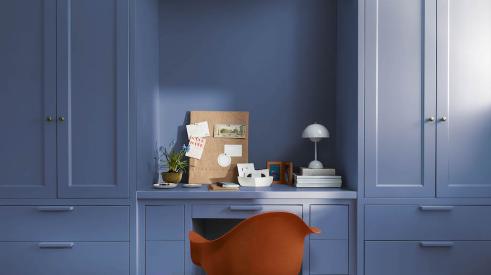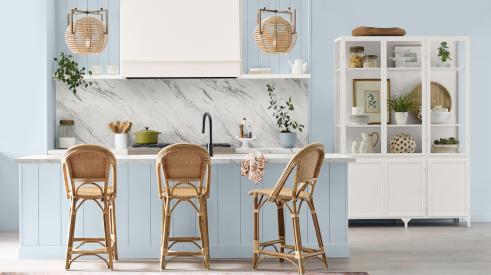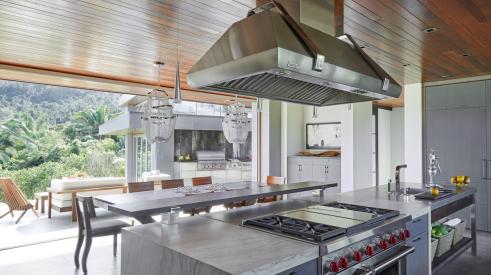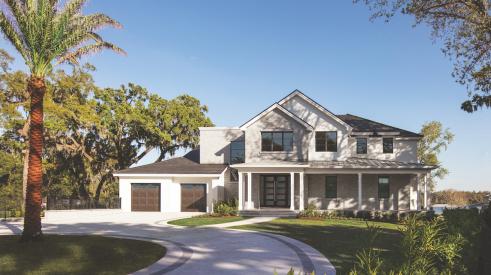 |
|
Canned lights throughout the basement brighten up the space, as do new replacement windows, glass block windows and a new fireplace. Basements and Beyond increased electrical service to the home from 150 to 250 amps and added a new electrical panel. "The house was really overloaded to begin with," says Kennedy. The increased service also allowed for installation of a new air-conditioning system. To make the new space feel less like a basement, Basements and Beyond installed a recessed ceiling, hiding ductwork between joists and using soffitts when necessary. Several of the floor joists had to be replaced or repaired due to dryness, age or sagging. Insulation in the ceiling reduces sound transmission between floors.
|
 |
 |
 |
 |
 |
|
A wine room now exists in the space previously occupied by the washer and dryer. It features a glass block window, etched glass French door, and cedar racks to store 800-900 bottles of wine. Located along the outside wall, the unheated room naturally stays at a constant temperature.
See the Floor Plan |
The story is typical: The owners of this 1,500-square-foot English Tudor needed to expand their living space, but setbacks and architectural controls in their Denver historic district restricted what could be done with an addition. So they turned to the 1,280-square-foot basement as the likeliest candidate.
"It was dark and restricted, not a place where you would want to spend much time," says remodeler Bill Kennedy of Basements and Beyond.
The homeowners wanted to transform the claustrophobic cellar into an appealing living area that included a family room, bedroom, laundry facility and wine room. The challenges: code violations such as insulation with asbestos, the lack of an egress window, and a ceiling clearance of only 76 inches.
The first step required roughing in an opening for a 4x4-foot egress window at the rear of the house. The window became Basements and Beyond's primary access for demolition and reconstruction.
"We couldn't bring in mechanical equipment due to a new driveway and no alley access," says Kennedy. "Everything had to come in and out of a 4 by 4 hole."
He hired a specialist to remove asbestos insulation around the old furnace and ductwork. Then demolition began in earnest. "Down to the bones," Kennedy says.
To increase ceiling height, Basements and Beyond began by digging out enough of the old concrete flooring to pour new footings for steel posts to support four new steel I-beams. Once the I-beams were in place, workers removed old brick support walls to open up the space. Then they removed the remainder of the concrete floor and hand-dug the dirt underneath: 8 inches down across the entire 1,280 square feet. They wheel-barrowed the dirt out to the street.
In the process, they removed the existing underground plumbing, then lowered it. The crew also had to install an ejector system for sewage because of the change in fall from the sewer line to the street. Finally, they pumped concrete for the new floor through a small window in the front of the house.
Kennedy carefully monitored feasibility on the project. "A lot of engineering was done first," he says. "No surprises." The project cost $134,000 and almost doubled the size of viable living space in the house.
Cabinets: MasterCraft. Carpet: Mohawk. Ceramic tile: Dal-Tile. Faucets: Delta. Insulation: Owens Corning. Lighting: Halo, Kichler. Locksets: Emtek. Paints: Kwal. Plumbing fixtures: Kohler. Sinks: Kohler. Windows: Hurd.
 |
Related Stories
Designing, Building, and Installing a Luxury Custom Wine Cube
An 11-foot wine cube enveloping a pantry is the stand out feature of this customized New York penthouse
Marvin Releases Switchable Privacy Glass Window
The privacy glass windows can be purchased from Marvin's Direct Glaze windows
Building A Small Projects Division from the Ground Up
Through hard work and careful strategy, Harth Home Services has seen big growth
Client Design Choices in the Time of Social Media and AI
Social media speeds up the trend cycles, and now artificially created images are falling into homeowners' hands
Design Trends to Watch in 2024
What’s in and out for the upcoming year? Remodeling designers share insights
Insights for Designing Outdoor Kitchens
Was the pandemic-fueled thirst for outdoor kitchen remodels and additions a fluke, or is it here to stay? Plus: The top design considerations for outdoor kitchens
Home Run Remodeling Lessons: The New American Remodel 2023
A final look at The New American Remodel 2023
Webinar: From Disjointed Design to Cohesive and Efficient—The New American Remodel 2023
Access the recording for the first The New American Remodel webinar held on March 8 at 2 pm CT



